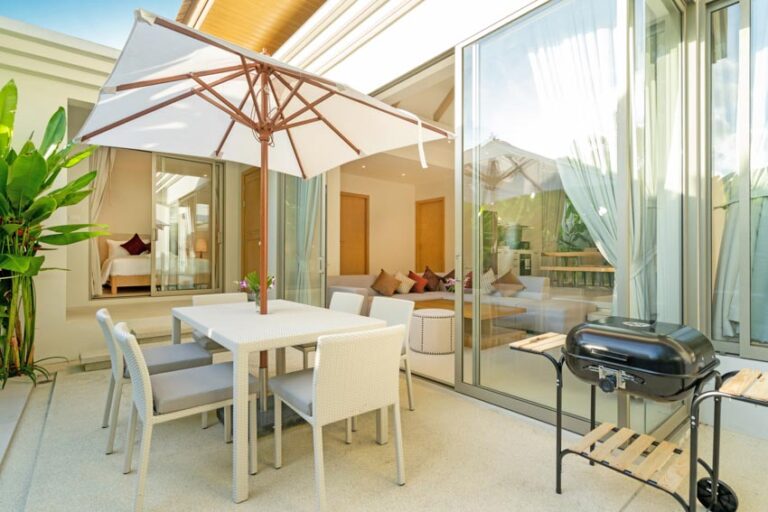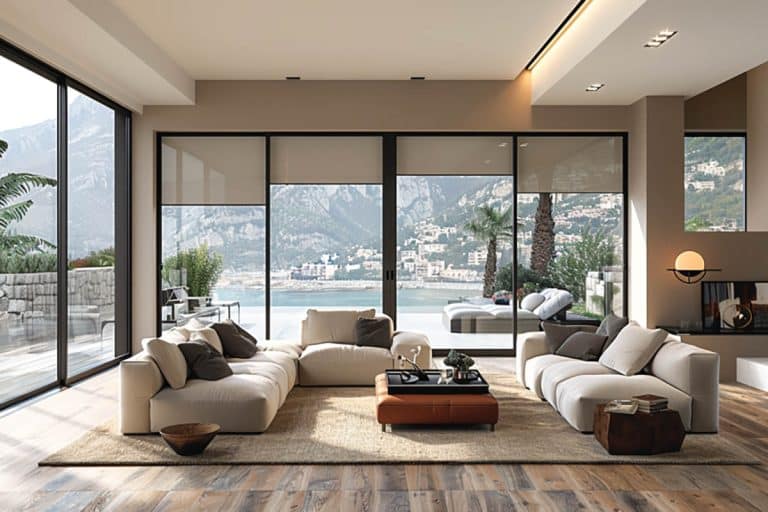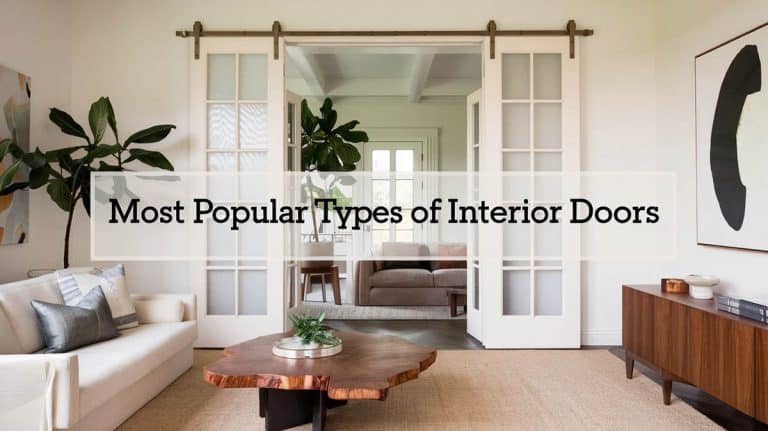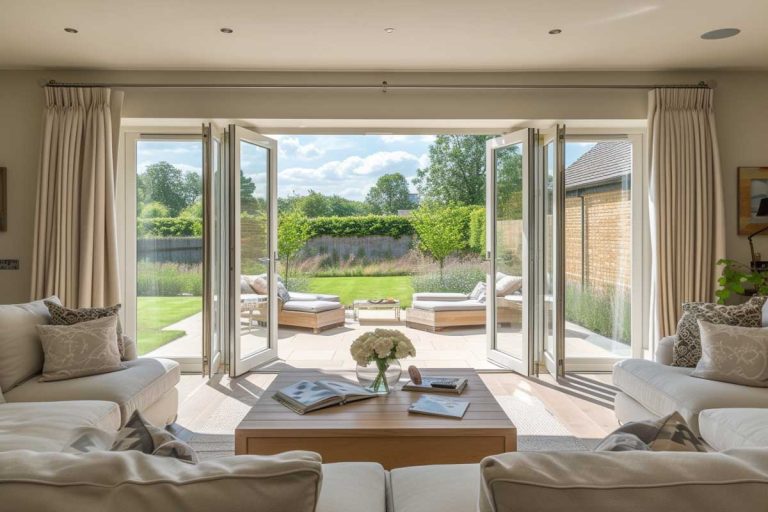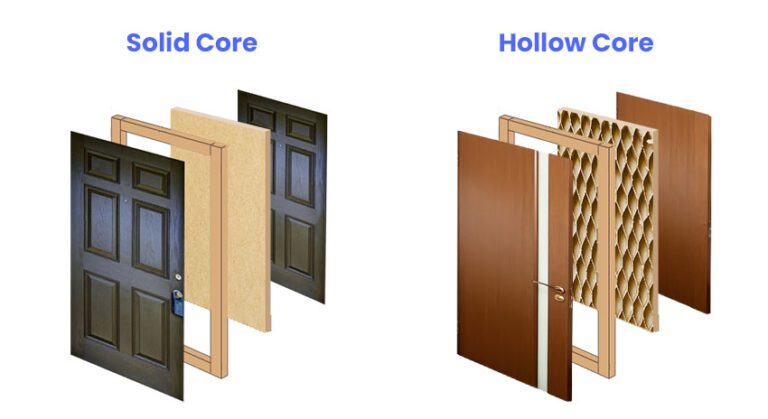Why You Never Want a Black Front Door (10 Reasons)

A front door is a mirror to the interior of the home, the power of its color is transformative and it gives guests a preview of what they could expect from the rest of your home. Black exterior doors may seem timeless and classic especially when incorporated with white trim. It creates a sense of being smart, stately, and in control.
However, using the color black for the front door nowadays doesn’t always apply to the design concept and is not for every home. If you are considering painting your entrance black, check out these 10 reasons why you need to avoid buying a black door.
Key Takeaways
- Heat Absorption
- Shows Dirt and Dust Easily
- Can Be Less Welcoming
- Potential Clash with Architecture or Design
- Can Fade Over Time
- Potential for Negative Symbolism
- May Not Suit All Seasons
- Shows Scratches and Imperfections
- Can Limit Your Decorating Options
- Can Affect Resale Value
Heat Absorption
Exterior doors technically provide insulation from the weather and enhance your home’s curb appeal. However, black paint absorbs more ultraviolet rays from sunlight than lighter colors since it does not reflect light.
Because of this, a black entry will become hotter than it can withstand, especially when facing the elements directly. As it absorbs heat each day, the wood will swell and shrink repeatedly until it warps due to the wood expanding, or it may split and crack.
There is this color characteristic known as Light Reflectance Value or LRV index which serves as a guide. The higher the value, the more the paint reflects light.
Black is at the lower end of the LRV spectrum at 0%. It is particularly important to consider the reflective properties of paint to use for your front door as it will uphold the durability. We suggest that it is best to choose colors with at least 55% LRV.
Shows Dirt and Dust Easily
Whether it is an exterior or interior door, black paint shows dirt more often than a neutral color or natural finish. Especially with a black high gloss finish, it magnifies the tiniest imperfections, dirt, and dust more than on white panels.
Fingerprints are more visible on black doors and may require you to clean more often. Black is also going to show more actual weather damage, blemish, chip, gouge, or surface flaws.
Can Be Less Welcoming
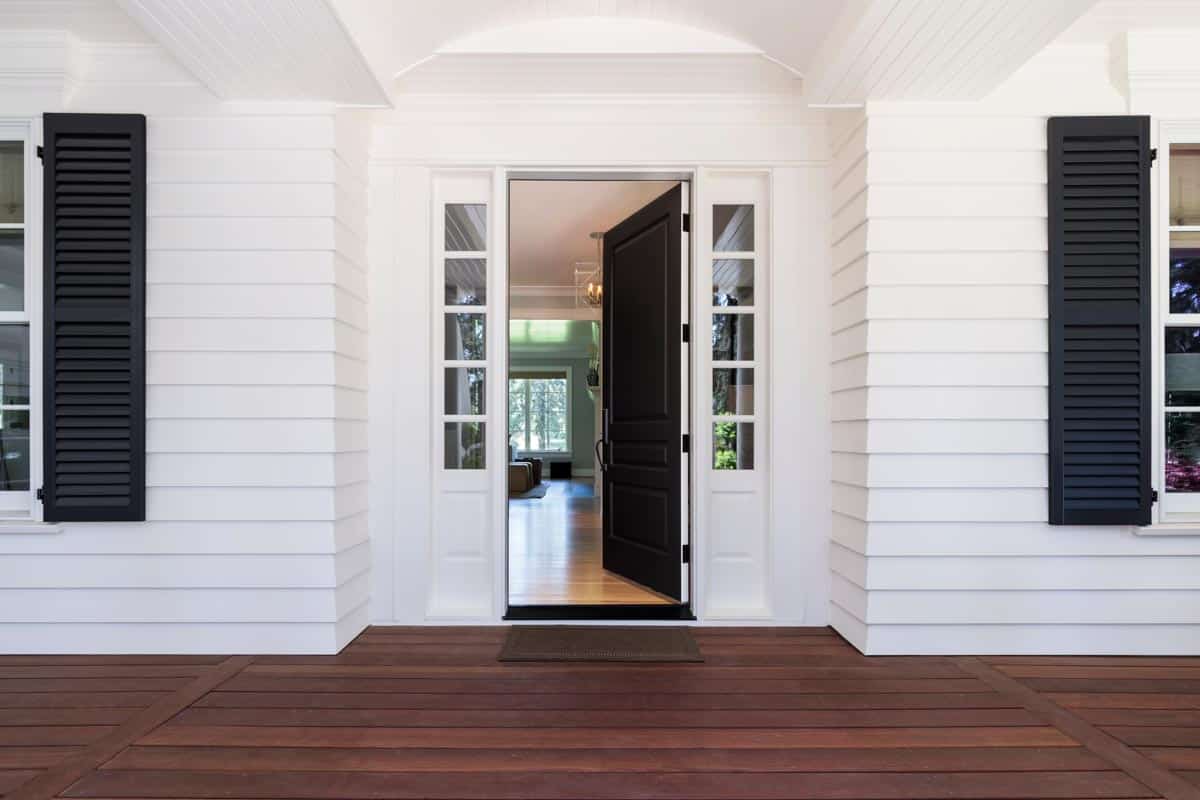
There’s no denying that black add depth, sophistication, and a strong visual statement to your home’s façade, especially those that use wide door measurements.
However, the black color has the drawback of being connected with strong cultural connotations such as dark shadows, Halloween, and other historical associations which can be foreboding as a front entry, especially with neighborhood children.
Potential Clash with Architecture or Design
There are some key considerations when selecting an exterior color for your front door. Architectural or design concepts call for colors that should complement the existing color scheme of your home’s exterior. Keep in mind that these entry colors can highlight the architectural features of your home.
Choose the colors in your home with awareness of how different colors affect your emotional and physical states. – Home Enlightenment: Practical, Earth-Friendly Advice for Creating a Nurturing, Healthy, and Toxin-Free Home and Lifestyle, Annie B. Bond
Choosing a door color that matches other homes in your neighborhood and gives balance to the design style of your home creates a more cohesive and harmonious look.
While a black entrance might be a unique and eye-catching color that reflects personal style and preferences, it may clash with the overall aesthetic of your neighborhood.
Can Fade Over Time
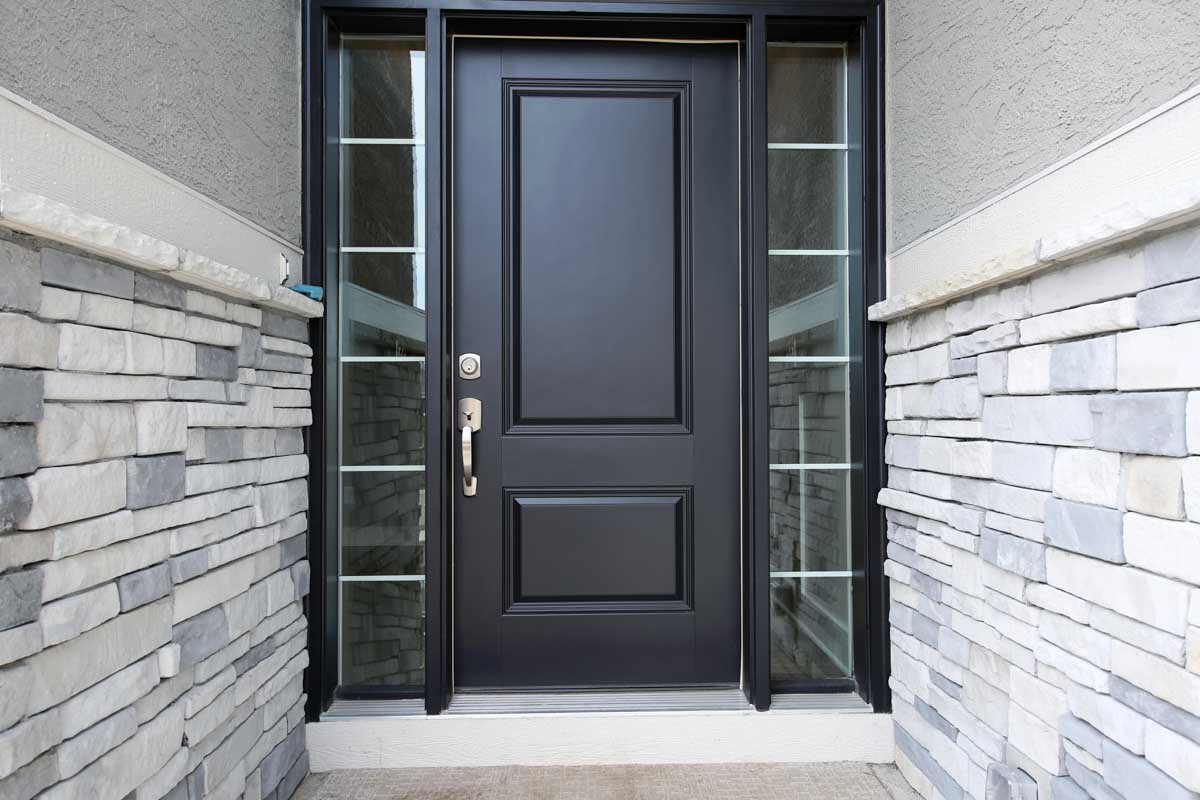
Deep hues tend to fade faster than lighter colors, and a black front door is no exception. Since black absorbs more heat and ultraviolet radiation, it results in rapid paint degradation. The ultraviolet rays tend to increase the heat strain on the color pigments present in the coating.
Over time, this exposure will eventually result in the black panels fading. A higher light reflectance value means less sunlight absorption and less risk of fading and damage.
Next time you look for paint colors for your front door, choose paints that are specifically designed to resist the effects of direct sunlight and select paints labeled as UV resistant.
Potential for Negative Symbolism
The black color is associated with darkness, sorrow, fear, gloom, death, and ancient devilish vim as well as said to omit unwanted negative energy, despite its timelessness.
One main reason to avoid having a black door is that it is often linked with misfortune which brings serious consequences to the health of those living inside the house and the homeowner’s prosperity. Since black absorbs sunlight, some people believe that it is bad luck and that black is dark and depressing as a front entrance shade.
May Not Suit All Seasons
The front door of your home will always be exposed to different weather conditions and the changing temperatures that come with the rain, sun, wind, and snow. Over time, these elements in the weather can affect how it functions.
As mentioned earlier, a black front door will absorb more heat and during the summer months, heat and humidity can cause it to expand. If your door faces south, prolonged exposure to the sun will cause it to quickly absorb UV rays and can eventually fade the paint.
In winter, just like the heat can cause expansion, due to the cold weather, your black door may shrink since the air doesn’t hold much moisture and humidity is lower. The repeated expansion and contraction of the surface due to the changes in season can eventually lead to warping, cracking, and deterioration of the door over time.
Dark wood doors carry unique vulnerabilities as the natural expansion and contraction of wood fibers can lead to warping and cracking over time. As GrandEntryDoors.com explains, temperature fluctuations cause uneven movement across the surface, forcing it to twist or bow out of alignment with the frame.
Shows Scratches and Imperfections
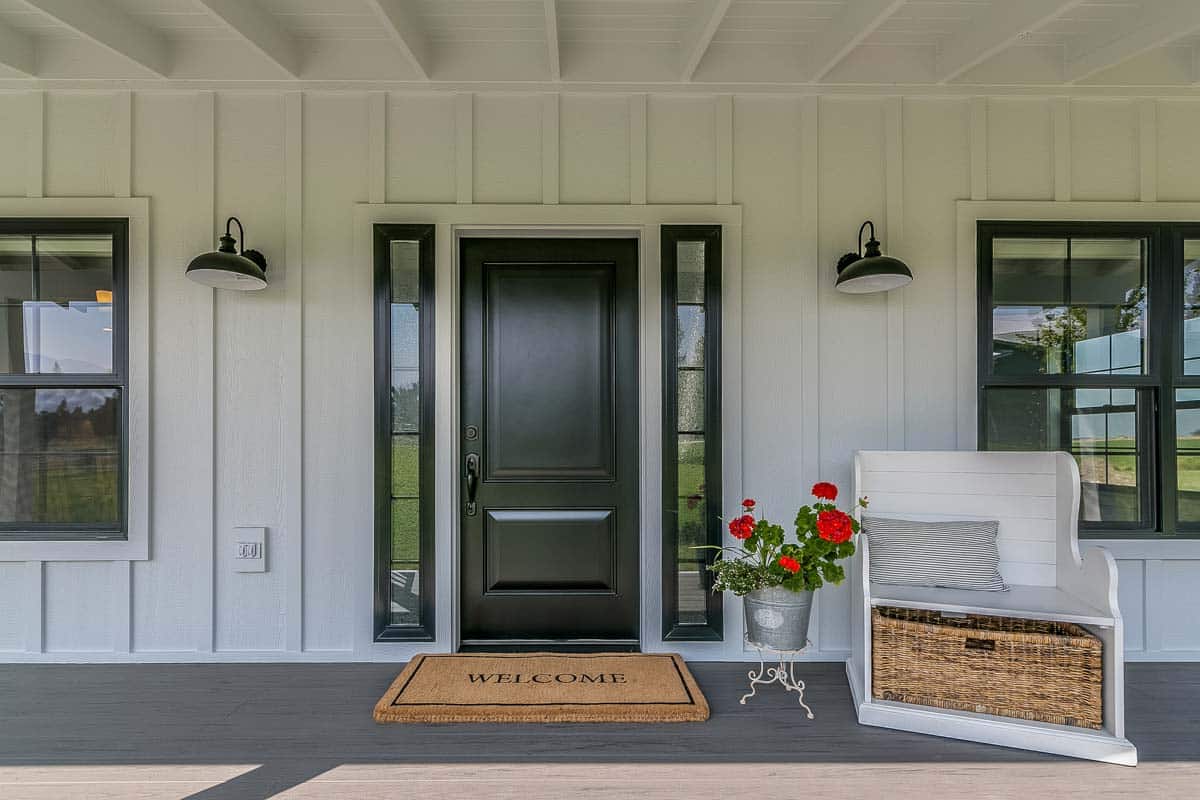
Although dark colors can hide a little bit of imperfections, dark paint always shows scratches more prominently than light ones, plus it can be more prone to peeling.
A recent report published on the home improvement website Redwood-uk.com looked at the use of black paint on front doors. The report found that high gloss black paint tends to emphasize any small imperfections in the underlying material. To combat this they use Zobel Anti-heat additive as a coating to reduce IR-radiation absorption which can damage the surface.
This can mean that you might need to touch up your black front door more than usual. Black tends to draw more attention, so painting your front door black will increase the chance of spotting those surface scratches and imperfections immediately.
Can Limit Your Decorating Options
As homeowners, you should understand that different architectural styles of houses call for different door colors, and having a black front door can create a specific mood or style that limits your design scheme.
Although the color black creates a sense of sophistication and timeless elegance, it may constrain your decorating options to only favor modern or contemporary style. While black symbolizes power and authority and may make you feel confident and in control, it can also create a gloomy and dingy atmosphere. In this case, using a frosted window pane may be a better idea to consider.
Can Affect Resale Value
It is a fact that a visually appealing front door can affect the resale value of your home since it contributes to the importance of first impressions and the overall appeal of your home. Remember that choosing the right door color is more than just a matter of aesthetics. It can also evoke emotions and have the power to influence people’s perceptions.
A black front door can significantly affect the overall curb appeal of your home and potentially lower your home’s value in the market due to the impact and characteristics that are associated with the color black.
If you are thinking of selling your home any time soon, we recommend choosing neutral colors that won’t offend or propose divided opinions from potential buyers.
What color you choose for your front door is completely down to your personal preference. At the end of the day, the colors that do not work for some may be the perfect option for you and your home.

